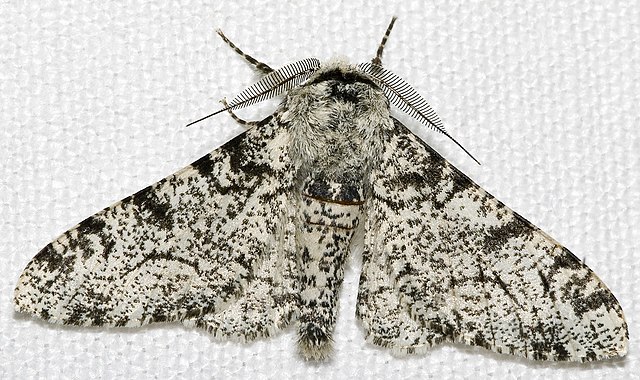Objections to evolution have been raised since evolutionary ideas came to prominence in the 19th century. When Charles Darwin published his 1859 book On the Origin of Species, his theory of evolution initially met opposition from scientists with different theories, but eventually came to receive near-universal acceptance in the scientific community. The observation of evolutionary processes occurring has been uncontroversial among mainstream biologists since the 1940s.
Charles Darwin's theory of evolution gained widespread acceptance as a description of the origin of species, but there was continued resistance to his views on the significance of natural selection as the mechanism of evolution.
White peppered moth
Black morph in peppered moth evolution. Even minor variation in a population can lead to evolution by natural selection.
Transitional species such as the Archaeopteryx have been a fixture of the creation–evolution debate for almost 150 years.
Alternatives to Darwinian evolution
Alternatives to Darwinian evolution have been proposed by scholars investigating biology to explain signs of evolution and the relatedness of different groups of living things. The alternatives in question do not deny that evolutionary changes over time are the origin of the diversity of life, nor that the organisms alive today share a common ancestor from the distant past ; rather, they propose alternative mechanisms of evolutionary change over time, arguing against mutations acted on by natural selection as the most important driver of evolutionary change.
The mediaeval great chain of being as a staircase, implying the possibility of progress: Ramon Lull's Ladder of Ascent and Descent of the Mind, 1305
Louis Pasteur believed that only living things could carry out fermentation. Painting by Albert Edelfelt, 1885
Henry Fairfield Osborn claimed in 1918 that Titanothere horns showed a non-adaptive orthogenetic trend.
Jean-Baptiste Lamarck, drawn by Jules Pizzetta, 1893








